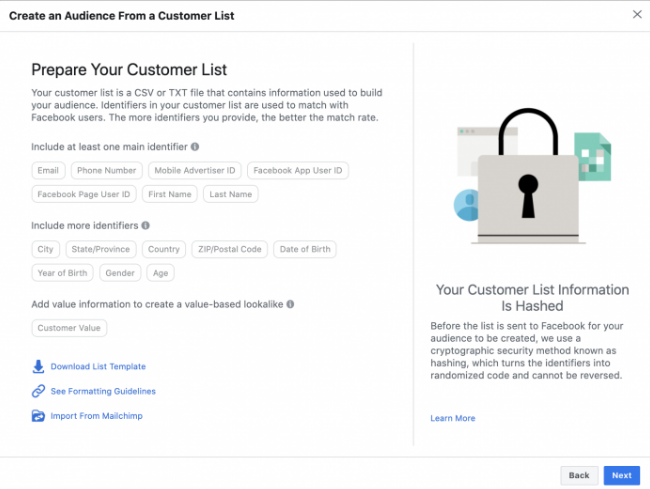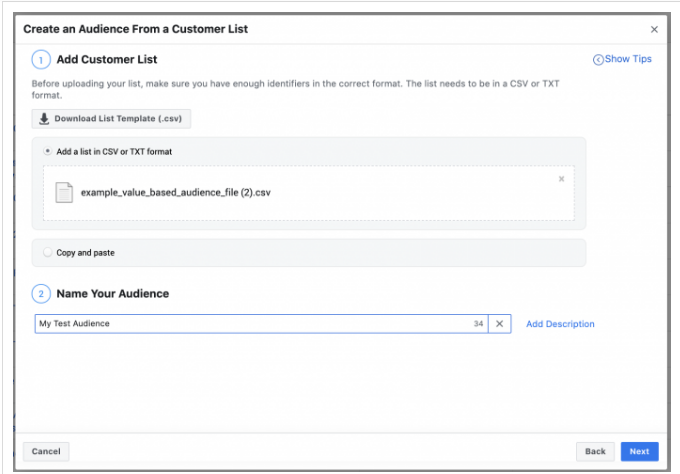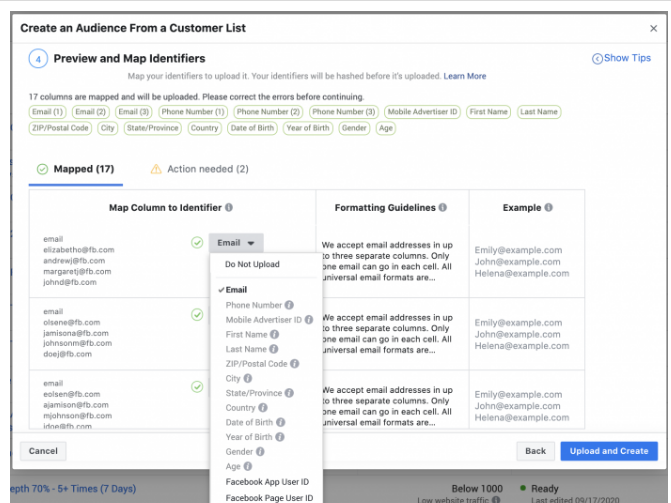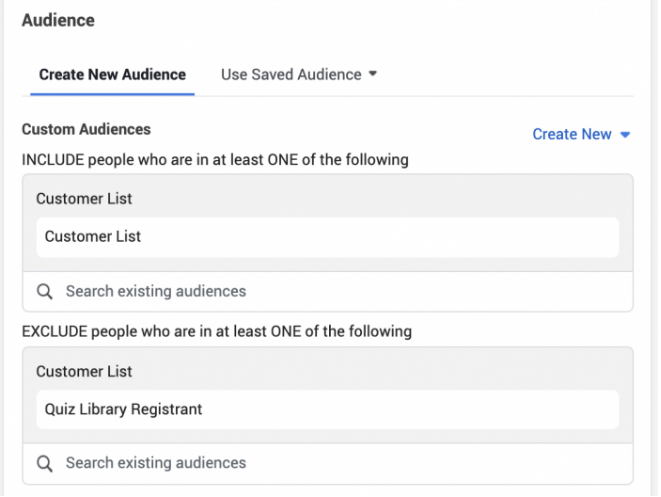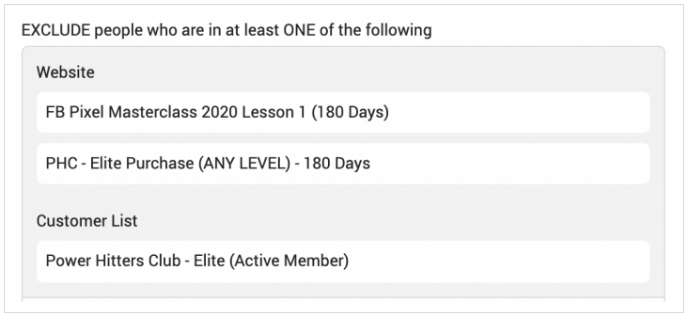Are you challenged with how to setup a profitable custom ads for your Facebook campaign?
Here is how to Create a Profit yielding Facebook custom audience based on your customer list.
[A THREAD] https://abs.twimg.com/emoji/v2/... draggable="false" alt="👇" title="Rückhand Zeigefinger nach unten" aria-label="Emoji: Rückhand Zeigefinger nach unten">
https://abs.twimg.com/emoji/v2/... draggable="false" alt="👇" title="Rückhand Zeigefinger nach unten" aria-label="Emoji: Rückhand Zeigefinger nach unten"> https://abs.twimg.com/emoji/v2/... draggable="false" alt="👇" title="Rückhand Zeigefinger nach unten" aria-label="Emoji: Rückhand Zeigefinger nach unten">
https://abs.twimg.com/emoji/v2/... draggable="false" alt="👇" title="Rückhand Zeigefinger nach unten" aria-label="Emoji: Rückhand Zeigefinger nach unten"> https://abs.twimg.com/emoji/v2/... draggable="false" alt="👇" title="Rückhand Zeigefinger nach unten" aria-label="Emoji: Rückhand Zeigefinger nach unten">
https://abs.twimg.com/emoji/v2/... draggable="false" alt="👇" title="Rückhand Zeigefinger nach unten" aria-label="Emoji: Rückhand Zeigefinger nach unten">
Here is how to Create a Profit yielding Facebook custom audience based on your customer list.
[A THREAD]
When running Facebook ads, advertisers have multiple steps of the funnel to attack. One key step of that funnel is the existing customer base.
There are multiple ways to reach these people, but one way is by creating a custom audience based on your customer list.
There are multiple ways to reach these people, but one way is by creating a custom audience based on your customer list.
This is one of the oldest methods of remarketing to a brand’s existing audience, but that doesn’t mean that you should neglect it.
Facebook custom audiences based on a customer list remain a staple for successful advertising strategies.
Facebook custom audiences based on a customer list remain a staple for successful advertising strategies.
Let’s quickly walk through the following:
 https://abs.twimg.com/emoji/v2/... draggable="false" alt="🎯" title="Volltreffer" aria-label="Emoji: Volltreffer">What these audiences are.
https://abs.twimg.com/emoji/v2/... draggable="false" alt="🎯" title="Volltreffer" aria-label="Emoji: Volltreffer">What these audiences are.
 https://abs.twimg.com/emoji/v2/... draggable="false" alt="🎯" title="Volltreffer" aria-label="Emoji: Volltreffer">How to prepare your list for a custom audience
https://abs.twimg.com/emoji/v2/... draggable="false" alt="🎯" title="Volltreffer" aria-label="Emoji: Volltreffer">How to prepare your list for a custom audience
 https://abs.twimg.com/emoji/v2/... draggable="false" alt="🎯" title="Volltreffer" aria-label="Emoji: Volltreffer">How to create your custom audience
https://abs.twimg.com/emoji/v2/... draggable="false" alt="🎯" title="Volltreffer" aria-label="Emoji: Volltreffer">How to create your custom audience
 https://abs.twimg.com/emoji/v2/... draggable="false" alt="🎯" title="Volltreffer" aria-label="Emoji: Volltreffer">Targeting and excluding
https://abs.twimg.com/emoji/v2/... draggable="false" alt="🎯" title="Volltreffer" aria-label="Emoji: Volltreffer">Targeting and excluding
 https://abs.twimg.com/emoji/v2/... draggable="false" alt="🎯" title="Volltreffer" aria-label="Emoji: Volltreffer">Custom Audience Terms
https://abs.twimg.com/emoji/v2/... draggable="false" alt="🎯" title="Volltreffer" aria-label="Emoji: Volltreffer">Custom Audience Terms
Facebook Ads and Your Customer List:
You have been building an email list away from Facebook.
While Facebook advertising is a key part of my marketing, email marketing may be the most effective revenue driver.
You should build this list, market to it, and leverage it with ads
You have been building an email list away from Facebook.
While Facebook advertising is a key part of my marketing, email marketing may be the most effective revenue driver.
You should build this list, market to it, and leverage it with ads
You can export your customer list and send it to Facebook.
This data is hashed and then matched up with people on Facebook based on names, email addresses, physical addresses, and more found in profiles.
You can then target or exclude these people within your advertising.
This data is hashed and then matched up with people on Facebook based on names, email addresses, physical addresses, and more found in profiles.
You can then target or exclude these people within your advertising.
Generally, you can expect anywhere from 30-70% of the people on your list to match up with users on Facebook for targeting.
In other words, an email list of 10,000 people doesn’t mean you can reach those 10,000 people with ads; you can expect somewhere closer to 3,000 – 7,000.
In other words, an email list of 10,000 people doesn’t mean you can reach those 10,000 people with ads; you can expect somewhere closer to 3,000 – 7,000.
Prepare Your Customer List
Go to http://facebook.com/ads/manager/audiences">https://facebook.com/ads/manag... or select Audiences within your Business Manager.
Click “Create Audience” and select “Custom Audience.”
Go to http://facebook.com/ads/manager/audiences">https://facebook.com/ads/manag... or select Audiences within your Business Manager.
Click “Create Audience” and select “Custom Audience.”
This means that each column of your file represents a different customer identifier. This includes email address, phone number, first & last name, and others.
The more identifiers (columns of data) you include, the more likely Facebook can match a customer with a Facebook user.
The more identifiers (columns of data) you include, the more likely Facebook can match a customer with a Facebook user.
For example, your customer’s email address may not match up with a Facebook user, but the combination of their first name, last name, and phone number might.
If you hover over an identifier, Facebook will give you an example of the format that this data needs to be in.
If you hover over an identifier, Facebook will give you an example of the format that this data needs to be in.
How to Create a Custom Audience Based on Customer List.
You can either upload a CSV or TXT file or do a simple copy and paste. Assuming your list is more than a few dozen and includes multiple columns, I’d go with a CSV file.
And name your audience as seen on the second below
You can either upload a CSV or TXT file or do a simple copy and paste. Assuming your list is more than a few dozen and includes multiple columns, I’d go with a CSV file.
And name your audience as seen on the second below
Assuming the names of your columns are different than what Facebook expects, you’ll need to map each column to its related identifier.
There may be columns that don’t match up to an identifier. In that case, just select “Do Not Upload” for that item.
When you’re done, click “Upload and Create” and you’re done!
When you’re done, click “Upload and Create” and you’re done!
Once created, you can decided to target or exclude this audience in your next facebook ad campaign.
Here is how,
Go to your ad set and select the audience that you want to target or exclude.
Here is how,
Go to your ad set and select the audience that you want to target or exclude.
In the example above, I am targeting my customer list while excluding a list of people who registered for one of my product offer.
Both are data file custom audiences, but they don’t need to be.
Both are data file custom audiences, but they don’t need to be.
We can also decide to combine multiple custom audience types, i mean website custom audiences, Facebook page engagement custom audiences, lead form custom audiences, etc. within the same targeting.
While my customer list custom audiences aren’t a top priority in my targeting, they are certainly in the mix.
For example…
1. Exclusions
Whenever I promote a product or opt-in, a high priority is excluding those who already signed up. As a result, I exclude every ...
For example…
1. Exclusions
Whenever I promote a product or opt-in, a high priority is excluding those who already signed up. As a result, I exclude every ...
Lead form custom audiences only last up to 90 days. Website custom audiences last 180 days. Even if both covered everyone within those time periods (they won’t), they create holes after that window expires.
While a custom audience based on your customer list may not have a 100% match rate, the nice thing is that there is no expiration date on the audience. Someone who signed up two years ago could still be on the list.
2. Up-Sell
Similar to #1, but for the purpose of targeting. Maybe I want to target everyone who signed up for my Facebook Pixel offer.
The Facebook pixel helps advertisers track events that occur on their website and reach people who performed those events with ads.
Similar to #1, but for the purpose of targeting. Maybe I want to target everyone who signed up for my Facebook Pixel offer.
The Facebook pixel helps advertisers track events that occur on their website and reach people who performed those events with ads.
I need to promote the Facebook Pixel Masterclass. I could do this by targeting the website custom audience and customer file custom audience of those who signed up for the free series.
Of course, I’d also exclude those who signed up for the paid training (like I did in #1).
Of course, I’d also exclude those who signed up for the paid training (like I did in #1).
3. Full List
Sometimes, I’ll promote blog posts or free opt-ins to those who have engaged with me in some way. I won’t focus on the most engaged so as to have some volume.
Here is a sample below,
Sometimes, I’ll promote blog posts or free opt-ins to those who have engaged with me in some way. I won’t focus on the most engaged so as to have some volume.
Here is a sample below,
I included website custom audiences. A website custom audience matches people who visit my website with people on Facebook.
I can then create ads to show to that audience in an attempt to generate the most volume of potential quality visitors.
I can then create ads to show to that audience in an attempt to generate the most volume of potential quality visitors.
I hope you& #39;ve learnt something.
How are you using Facebook custom audiences based on your customer list?
Drop that in a comment below and retweet a friend who might need this thread.
How are you using Facebook custom audiences based on your customer list?
Drop that in a comment below and retweet a friend who might need this thread.

 Read on Twitter
Read on Twitter


